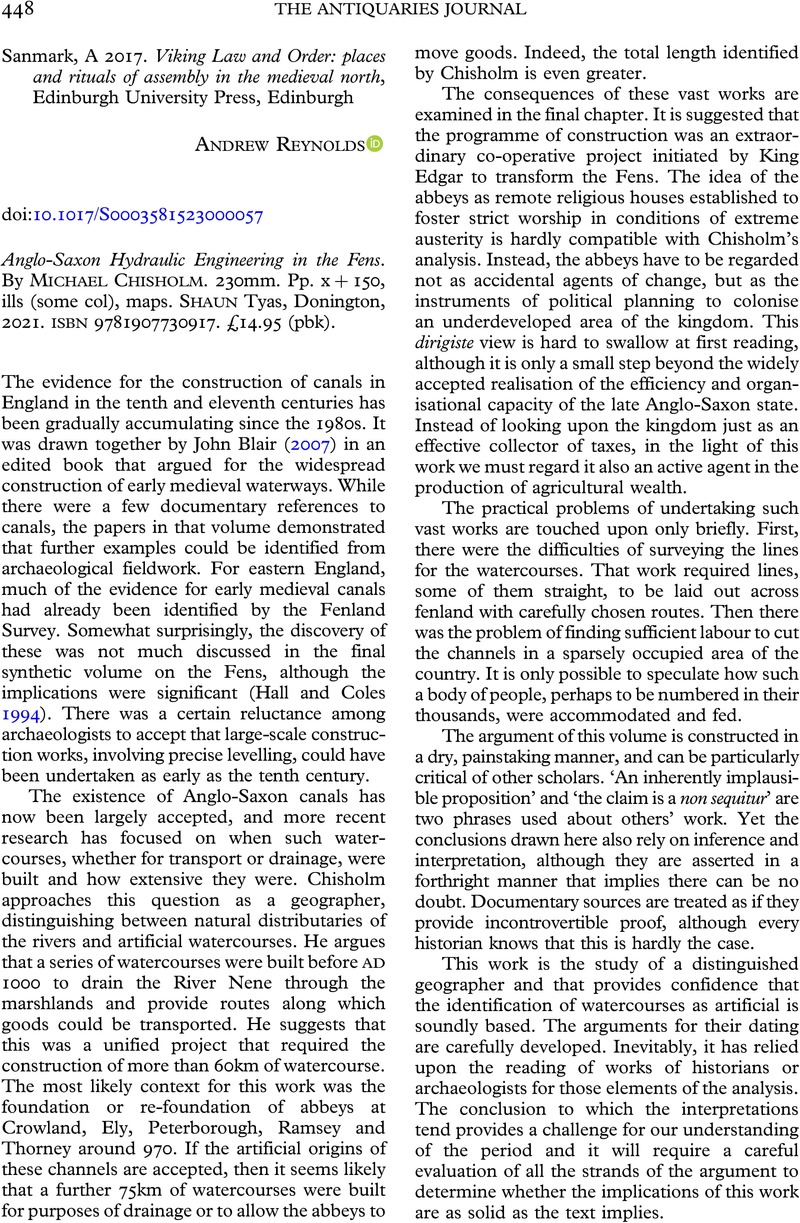No CrossRef data available.
Article contents
Anglo-Saxon Hydraulic Engineering in the Fens. By Michael Chisholm. 230mm. Pp. x + 150, ills (some col), maps. Shaun Tyas, Donington, 2021. isbn 9781907730917. £14.95 (pbk).
Review products
Anglo-Saxon Hydraulic Engineering in the Fens. By Michael Chisholm. 230mm. Pp. x + 150, ills (some col), maps. Shaun Tyas, Donington, 2021. isbn 9781907730917. £14.95 (pbk).
Published online by Cambridge University Press: 26 May 2023
Abstract
An abstract is not available for this content so a preview has been provided. Please use the Get access link above for information on how to access this content.

- Type
- Reviews
- Information
- Copyright
- © The Author(s), 2023. Published by Cambridge University Press on behalf of The Society of Antiquaries of London
References
Blair, J (ed) 2007. Waterways and Canal-building in Medieval England, Oxford University Press, Oxford
Google Scholar
Hall, D and Coles, J 1994. Fenland Survey: an essay in landscape and persistence, English Heritage, London
Google Scholar


